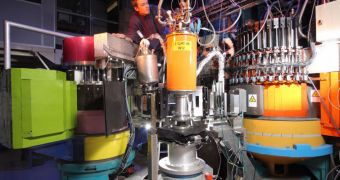An international team of researchers that included specialists from the Max Planck Institute for Chemical Physics of Solids, in Dresden, Germany, was able to gather conclusive evidence that magnetic fields can bring about unconventional superconductivity in a materials.
Physicists have been looking for evidence to indicate that this is the case for many years, which is what makes the new breakthrough all the more important. Superconductivity has a host of tremendously important practical applications.
While things are fairly well understood for the conventional type of superconductivity, how the unconventional one arises remained a matter of debate for many years. The new research managed to solve this mystery in an elegant solution.
The group explains that magnetic interactions are what suppress regular superconductivity in materials, and give birth to the other form. The reason why this is very important is because this is a form of zero-resistance current transport, which is of great use for many applications.
In a paper appearing in the December 12 online issue of the esteemed publication Nature Physics, experts explain that this research could lead to the development of new materials that would make the electronics of tomorrow even more advanced and reliable.
As a class of materials, unconventional superconductor have until now remained somewhat of a mystery to science. Thanks to the new investigations, things are now starting to become a lot clearer.
Understanding how superconductivity arises in materials is key to obtaining this effect at temperatures that are practical for daily applications. At this point, the highest temperatures at which this ability develops is around minus 135 degrees Celsius.
The goal among researchers in this field is to increase these values until they reach levels scientists can work with. But the experts first need to understand the origin of the phenomenon itself.
MPI-CPS director and leader of the new investigation, Frank Steglich, says that “our findings make an important contribution to this understanding.”
Researchers at the Institut Laue-Langevin, in Grenoble, TU Dresden, the Rice University, and the MPI for Physics of Complex Systems. also in Dresden, collaborated for this research.
The group conducted its investigations on the cerium-copper-silicon-based chemical called CeCu2Si2, the first unconventional superconductor. It was discovered by Steglich some 30 years ago.

 14 DAY TRIAL //
14 DAY TRIAL //